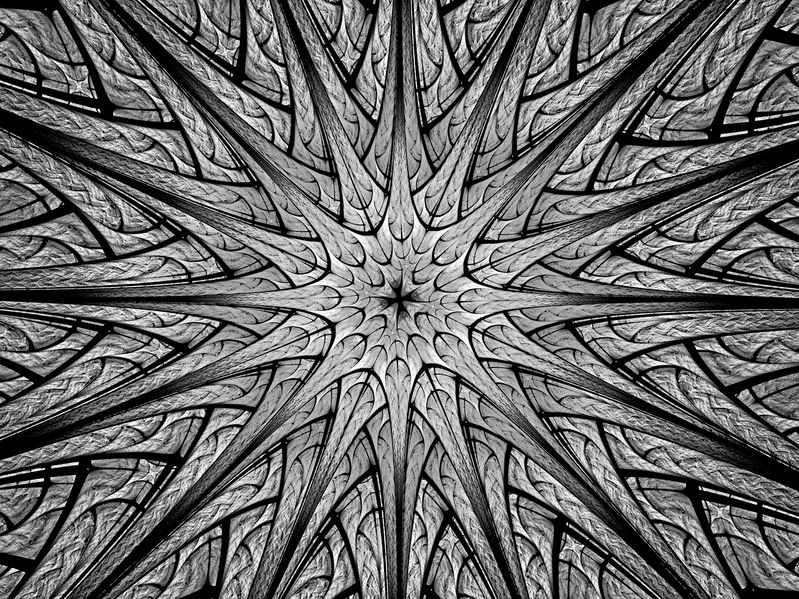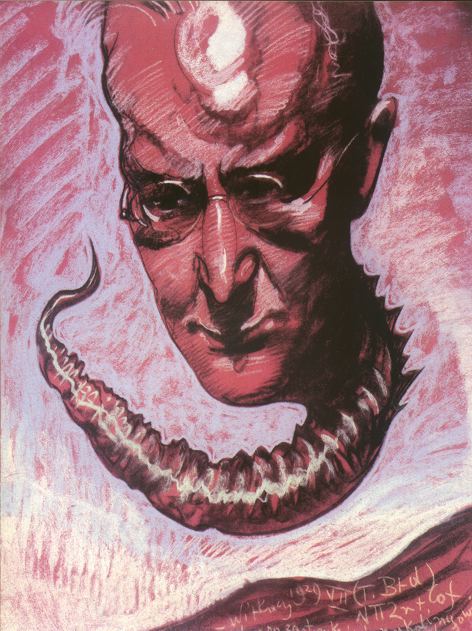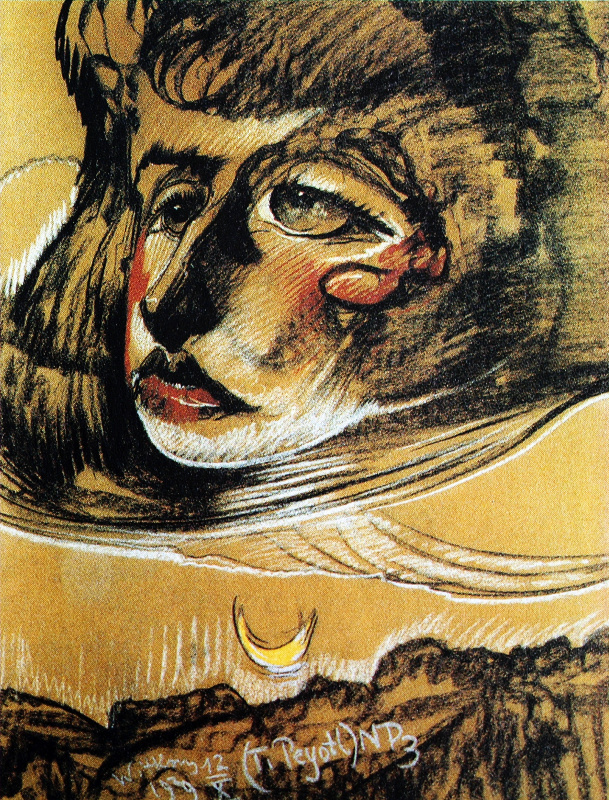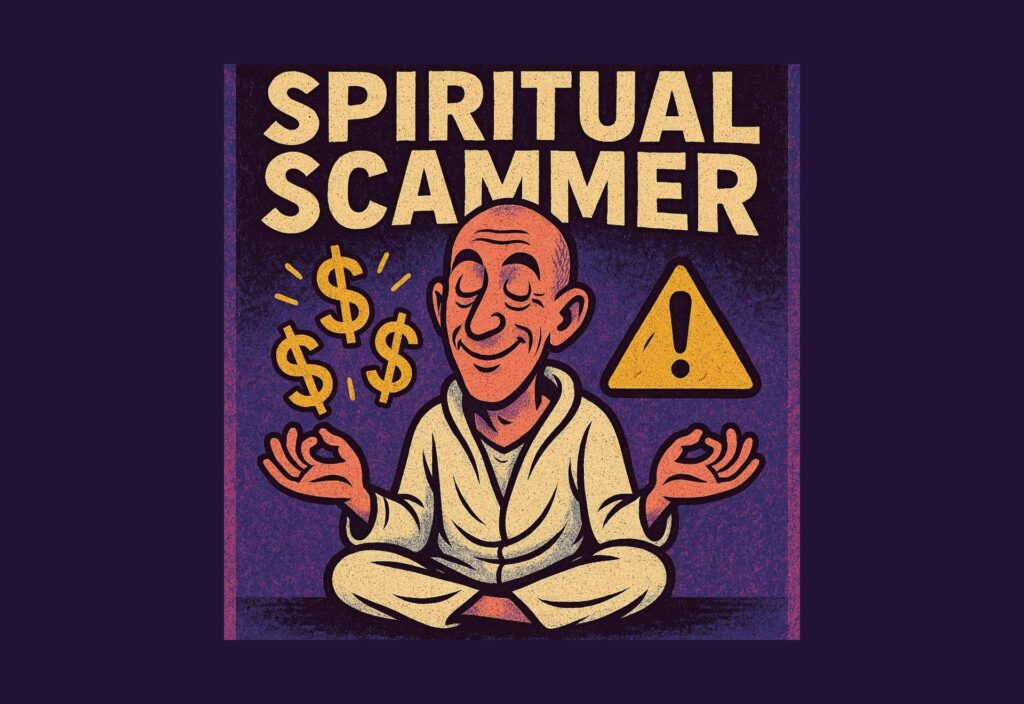Long before Carlos Castaneda and Aldous Huxley there was … Stanislaw Ignacy Witkiewicz (Witkacy). This avant-garde playwright, novelist, dramatist, painter, philosopher and psychedelic pioneer from Poland wrote one of the first literary descriptions of Peyote tripin 1928.
The following is excerpted from Narcotics: Nicotine, Alcohol, Cocaine, Peyote, Morphine, Ether + Appendices by Stanislaw Ignacy Witkiewicz (Witkacy), first published in Polish in 1930. This excerpt come from the translation by Soren Gauger, published by Twisted Spoon Press in 2018
***
20 July, 1928
Now I am faced with an especially difficult task: I must avoid being misunderstood, which is against all the odds, given my verdict on peyote.(…) When taking peyote, I stopped drinking for an extended period, about a year and a half (I have yet to relapse, I might add), before conclusively renouncing alcohol and other intoxicants (eucodal, harmine, i.e., a synthetic Banisteriopsis caapi (also known as “yagé”) produced by Merck, ether, and mescaline, a synthetic extract of one of peyote’s five ingredients), which I mainly took for my drawing experiments, with the customary doses of alcohol. (…)
I will just note my personal experiences with peyote, a drug that provides remarkable visions and profound glimpses into buried layers of the psyche and discourages the use of any other drug, above all alcohol. I consider its sporadic use utterly harmless, and given the absolute impossibility of forming a peyote habit, it ought to be used in every sanatorium where addicts of all stripes are treated.(…)
I should add that this was authentic Mexican peyote, from the modest stocks of Dr. Osta, President of the International Society for Metapsychic Research. (…)
I took the first dose of two pills at six in the evening. Because I had read nothing about peyote hallucinations, I was completely free of expectations as the drug took effect, without the slightest bit of autosuggestion. About half an hour after the first dose, right before I took the next one, I had a mild sense of arousal – like after two shots of vodka or a small line of coke. I believed my anxiety about the visions to come produced the arousal. It later turned out this was a peyote symptom. The whole time I was wracked by a fear of vomiting, afraid to retch up the precious substance before it seeped into my bloodstream. Fortunately, no such thing happened.(…)
At 6:50 I took a third dose and lay down on the bed, afraid I would vomit. A strange sense of self. Waiting in vain for the visions to start, I lit a cigarette, though I had no craving for one. After a few puffs I discarded it in disgust. From that moment until five the next afternoon it was easy to forgo smoking; I felt a loathing and contempt for cigarettes. (…)
8:20 – Increasingly clear images began to appear, though almost colorless, only just emerging from the black background. They recalled pale copied photographs from underexposed plates. Someone dressed in a wide-brimmed, black velvet hat leaning over an Italian balcony to speak to a crowd below. How I knew the balcony was Italian is anyone’s guess, but I did know – and this is enough. A general characteristic of peyote visions is the mysterious voice from the “cellars of the self” murmuring the significance of the images seen and supplementing what is not in the picture itself. (…) I then had the strange impression, particularly at the beginning of the session, that I knew I was seeing things that were not actually there, but which I could nonetheless describe just as if they were. This is one of the peyote experiences that is remarkably hard to articulate, and it is even more difficult to communicate to the reader what’s really happening. (…) Peyote sensations and the stranger visions – for some are utterly realistic – are as hard to reconstruct as dreams where you cannot be sure what is happening and for which no approximate comparison can be made, but whose contents one knows (intuitively, as it were), particularly right after waking. These images, connected in peculiar ways to sensations in the muscles and the internal organs, form a whole that cannot be untangled into its constituent parts, a remarkably subtle overall mood that eludes all analysis and crumbles into dust, into formless chaos, the moment the slightest effort is made to make it cohere.
(…)But insofar as alcohol and cocaine might be called “realistic intoxicants,” amplifying the world without lending it a veneer of the uncanny, I would call peyote a metaphysical narcotic. It gives a sense of the strangeness of Being seldom experienced in everyday life – alone in the mountains, late at night, at times of great intellectual exhaustion, sometimes at the sight of something very beautiful, or when listening to music, for this is not just a normal metaphysical-artistic sensation from directly apprehending the Pure Form of a work of art. This is a different case: it is not terror at the strangeness of Being, but a mild justification of its metaphysical necessity.
9:30 – A desire to forget reality. (…) Everything seemed to be taking place before a pair of curtains. I realized this only later, after having taken peyote a few times. This phenomenon always repeated, but at the time, I had no idea the curtains would part. Then it finally happened – and it all began with a small gold statue of Beelzebub as a faun! How I knew it was Beelzebub, I have no idea and never will. A mysterious voice told me the captions of the pictures; if I had seen them under normal circumstances, I would never have guessed what they represented. But before I forget: the first sense that this was now a vision came via an image produced by the wiry swirls, continually repeating in between the monster apparitions. The wires began melding into objects, forming an Indian headdress that turned into trees. Amid the same continuous flow of shapes transforming one into another, made of rainbow-colored wires, I clearly saw ostriches against a dark background. They then turned into plesiosaurs, and for a second the image basically froze. The plesiosaurs swayed their necks over a pond surrounded by ostrich-tail bushes. I said out loud: “I think I’m having my first vision.” I started dictating some of the images to my wife, to remember them amid the fearful riot of visuals, which had now begun and would last 11 (eleven!) hours with brief intermissions when I opened my eyes to rest, have a bite to eat, or to draw. And so, getting back to Beelzebub: suddenly the curtains tore apart, “le grand rideau du peyotl s’est déchiré” (it can only be said in French), and the first real vision emerged from the blackness. These were no hypnagogues, trails, or illusions: this was a new reality. Even more, I sensed I was now at the mercy of a merciless narcotic, that whatever I might do the flood of bizarre occurrences could not be stopped – unless I sat up all night with my eyes pried open. But as I soon discovered, even keeping my eyes open was of little help, because the more I stared, the more reality warped in terrifying ways. It was a relief to return to the “world of closed eyes,” because I could be somewhat, though not totally, certain of the unreality with my eyes closed. There were no guarantees here, either. The Indians are right when they say that whoever dares take peyote without first repenting his sins might be horribly punished. So it was with me. I should not have done it, but shortly before peyote day I got sloshed and did some damned coke. “You’ve had your fun – now you’ll pay.” At first it seemed nothing was happening. And then! I will not be able to describe everything, for the sake of both myself and the reader. I want this book to be read by everyone. I just don’t know if I can “invest” these words with all the beauty and horror of what I saw. Fiction in a novel and real life are two different things. With fiction I can drop all ceremony, I can go “whole hog,” and it’s still never enough. At least, this is how I see it, though some complain if literature gets too intense, preferring milk toast to Abyssinian bitches roasted alive on bringhausers and drizzled with yagé juice. Yet it seems to me that everyone should write with all the intensity they can muster, in both the subtleties and the brutalities. I am not saying that bad language is a condition of good literature. Some can pull it off, others not. The point is for an intensity in both the angelic and the demonic, and this is precisely what our literature lacks. Bah, enough of these digressions – and there are those who also dislike digressions, while I think they are precisely what gives a novel its flavor – provided they have the right intellectual tenor. So, Beelzebub … I will never forget that hellish impression when, being entirely of sound mind (at a point when I was not looking at the real world, with hardly a trace of the uncanny in me, of that “étrangeté de la réalité”that Rouhier describes) and fully cognizant that my eyes were shut tight, I saw a pure gold statuette (I could feel its weight) a couple of feet away, so sculpted and carved, so – passez-moi l’expréssion grotesque – cooked (an expression some painters use to mean “completed”), that it seemed the work of some truly Beelzebubic miniaturized Donatello from another planet, or some Europeanized Chinese artist who had squandered his whole life making this one thing. The miracle occurred. “I see it, I see it,” I repeated to myself. How long this ecstatic moment lasted (because those “first times” are always the finest, there’s no denying it – later moments may be greater and more potent, fuller and more complete, but it’s not the same – that first taste never returns), I do not know. Yet I became convinced later that the ability to judge fails us during peyote visions. I have called this, in “peyote language,” an “inflation of time.” Perhaps because we desire to formulate the indescribable in words, peyote creates conceptual neologisms true only unto themselves, warping syntax to the terrible proportions of the uncanny. (This is a brilliant term, and I would continue to use it in this sense even if a hundred professors were to string themselves up by their own intestines. Language is a living creature, and if it were always handled like a mummy and treated as if we could not change it one iota, then what would become of our literature and poetry, to say nothing of our goddamned treasured life?) But perhaps this desire to create new combinations of meanings is the famed “schizophrenic displacement” – Schizophrenische Verschiebung – that Beringer uses to describe Merck’s mescalines. (Merck is a hellish name for all those who have shacked up with the white poisons. Apropos – peyote extract is blackish-brownish-green, like a mixture of asphalt and goose turds, and tastes revolting: bitter, sharp, with an aftertaste of barf.) Apparently, peyote makes even pyknics slightly wobble toward a schizophrenic psycho-structure – to say nothing of true “schizoids” who take it. But I will return to this point when I discuss mescaline. And suddenly (“O wonder of wonders!” as a poet might exclaim), Beelzebub came alive – though all the while a lifeless, gold Beelzebub, now he smiled, steeled his gaze, even turned his head.
Yet I was sure that before me was just a chunk of pure gold. Peyote visions comprise three types of objects: inanimate, animated inanimate, and living creatures. These can be separated into the real and the fantastical, while the real ones can be 1) simple and familiar, or 2) a combination of familiar elements with no equivalents in reality. The fantastical ones “defy,” as they say (but, alas, never aloud), all attempts at adequate description – they are comprehended only for the moment they are seen, and even then, not entirely. The second they vanish from the peyote reality, no power on earth can reconstruct them. In the passages below I attempt to fix at least an approximate notion of how to categorize these fantastical visions. Whoever has never seen such creatures will not be able to fathom them. And then, of course, comes the show’s demonic conclusion! Peyote reality is like our own seen through a microscope, though only in the precision of the “execution.” The field of vision is initially tight, the visions begin more or less in the center. The longer the eyes are shut, the more the field broadens and sometimes even almost “envelops” the peyote user like everyday reality, creeping up on both sides and even producing the strange sensation of having eyes at the back of your head. Meanwhile, I need to (definitely) add that the peyote field of vision is uniform throughout. There is no one focal point that blurs as the edges – everything in the near vicinity has the sharpness of a focal point under normal vision. The other thing I should note is that I will be describing about 1/2000 (one two-thousandth) of all the visions I experienced on that unforgettable night. Almost everything I did not note down over the course of the trance irrevocably vanished in the wild torrent of images, constantly changing and transforming into others, elusive and fleeting, though the contrasts between one image and the next were astonishing. I was facing the corner of a vast, red brick building. Every brick had a distorted and caricatured face. These faces turned bestial, and seconds later the whole edifice was spangled with creatures recalling the gargoyles on Notre Dame in Paris.
(…) A struggle between nonsensical and indescribable things. A row of chambers turned into an underground circus. Strange beasts appeared in the loges. The crowd was a mixed bag, an audience half-animal, half-human. The loges turned into bathtubs, connected to urinals in the Mexican or Aztec style. A sense at times of two layers of visibility: the images in the depths were chiefly black and white, while the background had putrid red and dirty lemon-yellow diagonal stripes. The majority of the visions had beasts of land and sea and horrible human faces. Giraffes whose necks and heads turned into snakes growing out of their bodies. A ram with a flamingo nose hung with pink guts. Indian cobras slithered out of the ram, then the whole thing crumbled into a mass of snakes. A seal on a beach – an utterly realistic sunny seascape.(…)
12:30 – I draw with a pencil on small sheets of ordinary paper, despite the overwhelming lethargy. I pull myself together enough to make a few drawings marked “peyote” for some friends who collect the “wilder” products of my imagination. The drawings are quite modest, but they do approximate what I’m seeing in my visions.(…)
1:37. It all starts with Bolsheviks (Trotsky) and their metamorphoses. Crayfish-colored supergenitals, then in-de-scribable erotic scenes followed by a symbolic image of rapture in the form of crayfish-colored and azure beasts grappling with one another. Cobalt eyes sometimes flash on stamens. It all ends in reptiles. (…)
8:15 – Straggling visions of iridescent wires, as at the beginning of the trance. Breakfast, a bath. At ten I lie down to sleep and have the dregs of visions. I sleep till noon. I feel normal, apart from a slight giddiness and spatial disorientation. Pupils slightly dilated until evening. Pulse normal.(…)
In addition to the above substances, I’ve also tried yagé (in the form of Merck harmine), Eukodal, and hashish – the latter as an extract of Cannabis indica, but authentic and freshly imported from Persia – I also smoked the Persian hashish, under whose influence I made some drawings, each distinct in the mood created and how it was influenced. In large doses, and particularly mixed with alcohol, hashish induces fairly odd visions, with objects and people multiplying into infinity. It also induces fascinating states of mind: identification with objects, a loss of identity for short stretches of time, etc. But hashish visions “don’t hold a candle” to peyote ones. The two are incomparable. Harmine evokes a certain “strangeness of reality” and is good for automatic drawing. Yet because of its effect on the extrapyramidal system and its tendency to make you impulsive, I did not have the courage to exceed the maximum therapeutic dosage. Let anything at all happen to the head, but losing total muscle control is, I believe, a bridge too far. I conclude these meditations with a strident appeal: “Awake, smokers and drinkers, and other drug addicts, while you still have time! Down with nicotine, alcohol, and all the ‘white frenzies.’ If peyote proves to be a general antidote to all these vile substances, then in this case, and in this case only: Long live peyote!”
***
All art by Stanislaw Ignacy Witkiewicz


















